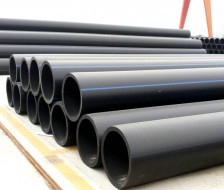

Due to harsh usage environments and prolonged use,PE pipes have experienced aging.PE pipes are more prone to cracking.What are the reasons for this?Let's take a look together.
One reason may be due to the evaporation and drying of moisture on the surface of the newly poured concrete.The newly poured concrete has a high external temperature and low relative humidity in the air.While the surface evaporates and dries,the interior is still plastic,which leads to the formation of cracks in the PE pipe.
Another main reason is that the hydration heat during concrete hardening causes a temperature difference between the inside and outside of the concrete.For deeper layers of concrete,during the pouring process of the upper layer,it will continuously settle due to its own weight.So when the concrete begins to set but is not yet fully set,it will be obstructed by steel bars or formwork connecting bolts and other things,which will cause cracks and lead to the phenomenon of PE pipe cracking.

To prevent the occurrence of cracks in PE pipes,we need to effectively control the internal heating rate of reinforced concrete drainage pipes.Firstly,adding an appropriate amount of mineral fly ash in concrete production to slow down the release rate of hydration heat;Secondly,the temperature of the raw materials is controlled by circulating water through cooling pipes inside the concrete structure to release hydration heat energy.When cracks have appeared in concrete,applying cement slurry or low viscosity polymer to seal the cracks can prevent moisture from entering;When the crack is deep or wide,pressure grouting technology is used for repair.
The above is an introduction to the causes and solutions of PE pipe cracks.The manufacturer reminds us that when constructing PE pipes,we must pay attention to the precautions during construction.Regardless of the reason for the pipe rupture,we must promptly detect and solve it quickly to avoid unnecessary trouble.